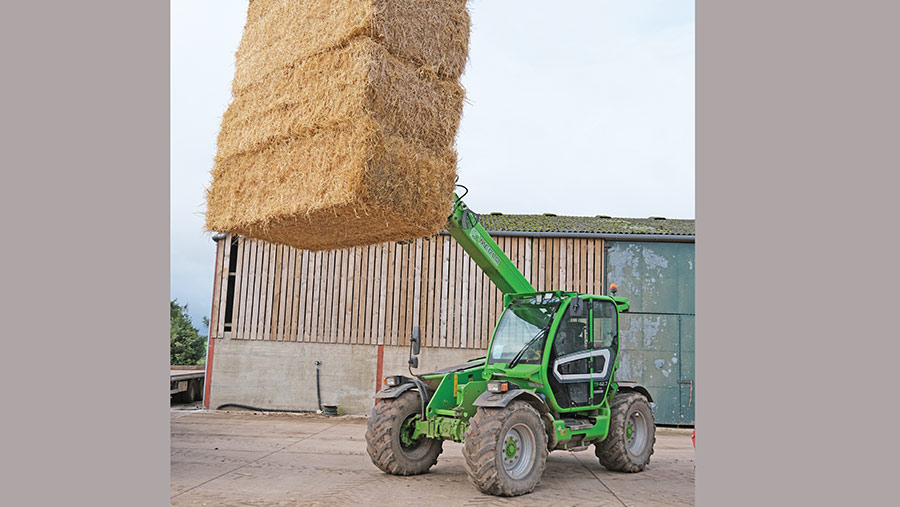What’s in Your Shed? visits Herefordshire farmers the Wildigs
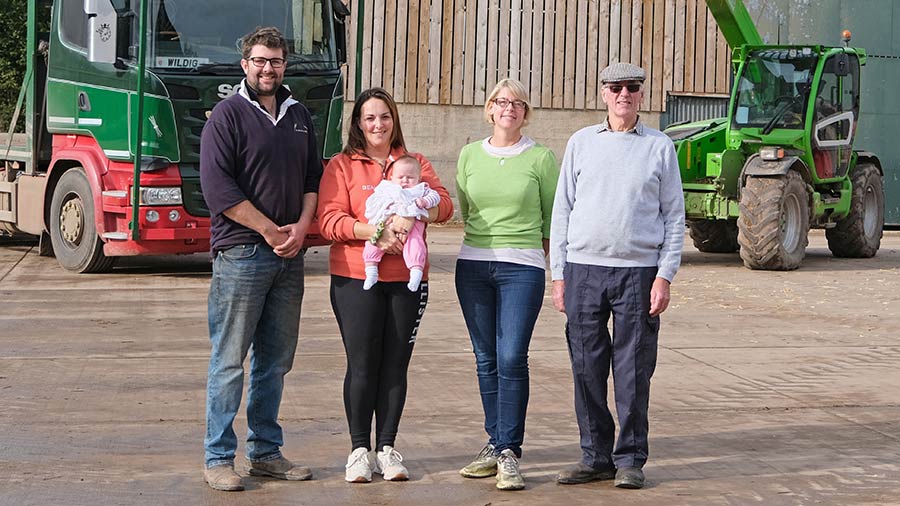 From left; James Wildig, Aimie Dennis with Eliza, Sarah and Phil Wildig © James Andrews
From left; James Wildig, Aimie Dennis with Eliza, Sarah and Phil Wildig © James Andrews Our latest ferret around the nation’s machinery sheds features Herefordshire farmers, contractors and hay/straw dealers James, Phil and Sarah Wildig.
See also: What’s in Your Shed? visits Oxon farmer Harry Metcalfe
Farm facts: N Wildig and Sons
- 117ha of grass, arable, stubble turnips and some let ground for potatoes
- 200 Suffolk and Texel ewes and 30 Hereford-cross cattle
- 600ha hay and straw baling
- Contracting and machinery hire
- Staff are Phil, James and Sarah Wildig, William Duggan, Dan Lamont, part-time shepherdess Kerry Barber and some casual workers
In the shed
- Tractors Fendt 724, New Holland T7050 and T6080 with Quicke Q6M loader, John Deere 6910, Case 885XL, Ford 6600, Fordson Power Major
- Hay and straw kit Krone Easycut 3.2m front-and-rear mowers, Lely 770 tedder, Krone KW 7.82 tedder, Krone Swadro 46 single-rotor rake, John Deere 459 conventional baler with Cooks flat-eight sledge, hired Massey Ferguson 2270 baler
- Telehandler Merlo 42.7 CVTronic
- Cultivation kit Dowdeswell DP130 six-furrow plough, 3m Sumo Trio
- Drill 3m Kuhn Venta power harrow combination
- Lorry Scania R450
Merlo 42.7 © James Andrews
How brand loyal are you?
On the tractor front, not very. We’re more interested in picking models that have a good reputation and hold their value, so the main workhorses are a Fendt 724, New Holland T6080 and T7050, and a John Deere 6910.
The telehandler is a different story though. We spend a lot of time moving bales and loading lorries and have found Merlos to be brilliant for this.
They’re comfortable to drive and the hydrostatic transmissions are smooth and controlled around the yard.
That said, the current model has the CVTronic CVT, which we’re not quite so keen on.
Favourite dealer?
We don’t use main dealers that often as we shop around for good second-hand equipment and will travel some distance to get the right machine.
To save on servicing and repairs, we also try to use independent mechanics where possible.
Tom George of APA Mechanics is our go-to for the New Hollands, Bristow Brothers at Hereford has carried out a few jobs on our John Deere, Steve Hodges and Stewart Linton help spanner the Merlo and Nick Smith has done some work on the Fendt.
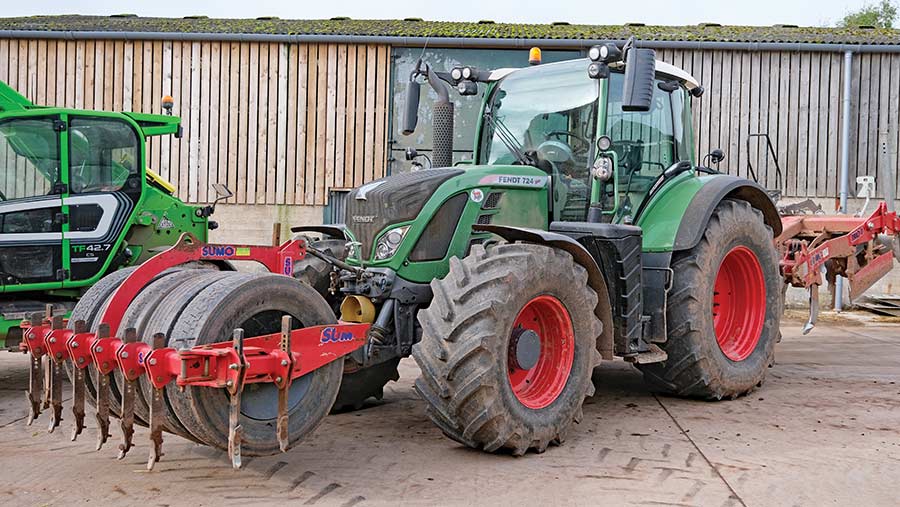
Fendt 724 © James Andrews
Favourite piece of kit?
We produce quite a bit of racehorse hay, some of which we try to send to Newmarket, so the quality has to be spot on.
Good, even tedding is a big part of this, and we’ve never come across a machine that does the job as well as our Lely 770.
Admittedly, build quality isn’t as tough as some, but it’s amazing how uniformly it spreads the grass without creating lumps.
Our Krone KW 7.82 is nowhere near as good and it tends to lay the crop down in lines.
Least favourite piece of kit?
It’s gone now, but we had a 1999 Manitou MLT 732 which was a hateful machine.
It was clumsy for its reach and lift capacity and the shaft between the engine and transmission kept failing.
It cost £900 and we replaced it three times in the three years we had it.
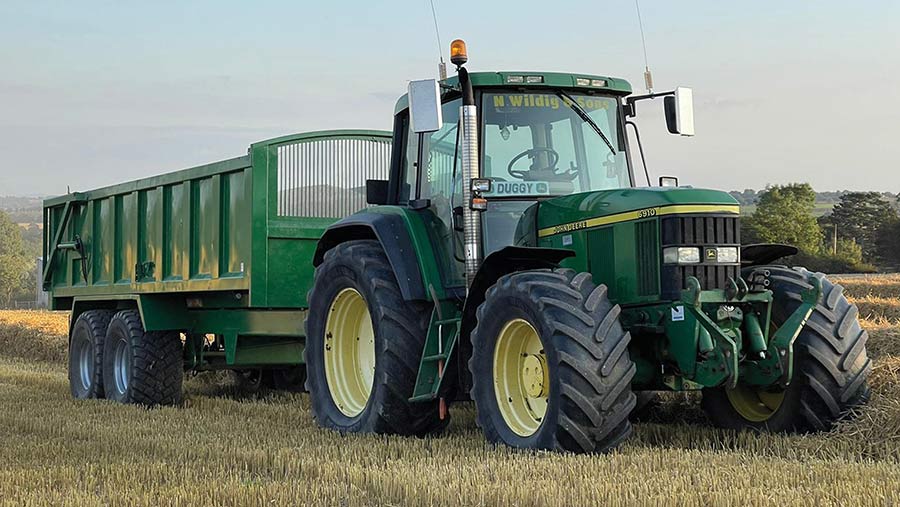
The John Deere 6910 was recently treated to a £5,000 refurb © James Andrews
How long do you keep your machines?
There’s no set replacement policy, but we’re always on the hunt for popular second-hand tractors in good condition at a sensible price.
These aren’t always easy to find, but if you cast your net wide enough and look for long enough, they do come up.
Sometimes they will replace something we’ve already got, or we’ll use them for a while, see if they appreciate in value, and hopefully sell them on for a profit.
A recent example was an exceptionally tidy Case Magnum 310 that we used on the big baler for a season and sold on for £6,000 profit.
It had bags of power and it was tough to see it go, but we didn’t need it and it made financial sense.
The money was put towards concreting the yard which, although costing as much as a new 200hp tractor, is far more useful for us.
We’re very much of the opinion that tractors should be working for us, rather than us working to pay the finance and depreciation.
By running second-hand models that have a chance of going up in value, we’re not having to work every hour under the sun to try to pay for them and we can put the money to good use elsewhere.
Latest purchase?
After hiring a Sumo Trio off a friend for years, we bit the bullet and bought a second-hand model.
They’re not that trendy in some regions these days, but they’re a very popular and versatile tool in this area and they do a fantastic job.
Build quality is also first class and it should hold its value well.
It gets used for our own arable area and we hire it out. But there also seems to be growing demand for contracting work.
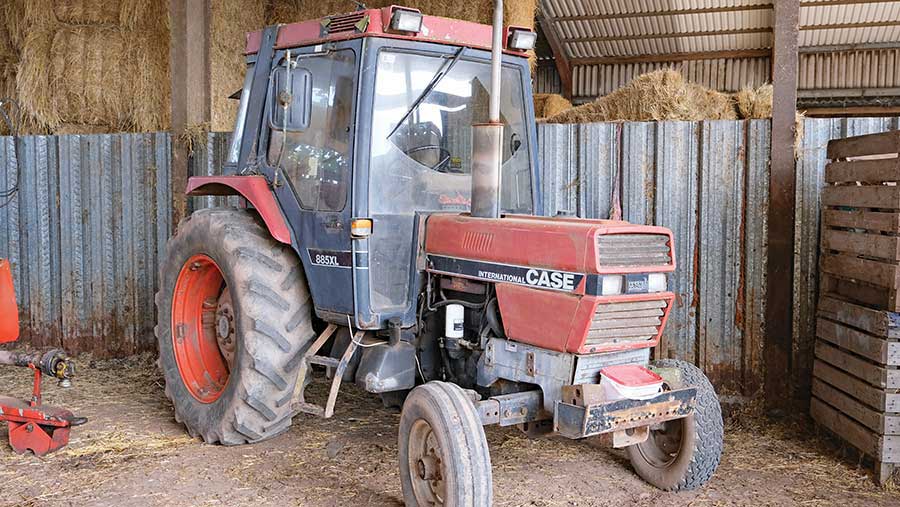
1987 Case 885XL © James Andrews
Oldest machine still at work?
We’ve got several classic pieces of machinery, but the oldest that still gets used regularly is a 1987 Case 885XL.
It was bought when it was a couple of years old to replace a Ford 4000 and has done all sorts of jobs over the years.
Reliability has been excellent and the engine has never smoked, even at 9,000 hours.
These days it spends most of its time hooked to a Teagle Tomahawk straw bedder.
Next on your wish list?
It would be nice to replace the Merlo at some point. This one is OK, but it has had a series of AdBlue problems, it’s constantly getting oil leaks and it has a CVTronic transmission, which isn’t as nice to use as a hydrostatic.
It might be better for towing, but we never use it for pulling trailers so there’s little benefit for us.
The previous one, a 34.7, was much better, with a two-speed hydrostatic transmission and the tough ring-of-steel construction.
It would be nice if Merlo offered a newer version of this.
Biggest machinery mistake?
James: Thankfully, we haven’t had too many big disasters, but I made an expensive mistake on my way home with the big baler after finishing the last field this season.
I failed to spot a raised manhole on the side of a narrow lane and took out both tyres on that side.
The insurance company didn’t want to know, so we had to fork out £600 each for replacements.
Most expensive repair bill?
Luckily, we haven’t had any crazy bills for breakdowns, but we have just spent £5,000 with Bristow Brothers giving the John Deere 6910 a bit of TLC.
This has included replacing the spool valve cables, fitting a new radiator and water pump, upgrading to a new air seat and adding a new linkage rocker shaft.
It’s a brilliant, simple tractor that can still hold its own among the modern stuff, so it’s worth spending some money to keep it up together.
Most overpriced spare part?
Prices for genuine parts have got ridiculous and we had a bill from a main dealer for more than £2,000 the other day.
A large portion of this – £1,489 – was for the hydraulic valve that activates the air brakes on one of the New Hollands.
It’s probably a universal part, so we’re going to see if we can get it cheaper through Allspares.
We once sourced a £15 air valve from there that New Holland had listed for £139.
Generally, we use genuine filters, but the prices for these are getting so steep that aftermarket versions might have to do.
Best invention?
Rather than buy expensive agricultural straw trailers, we came up with a neat design for converting SDC HGV curtain-siders.
The model we use has a low bed that means we can fit 32 120×90 bales without being too tall, and it has triple axles with wide 445mm tyres that travel well on soft ground.
They’re also incredibly strong, the air brakes are excellent and, thanks to the air suspension, they pull very smoothly.
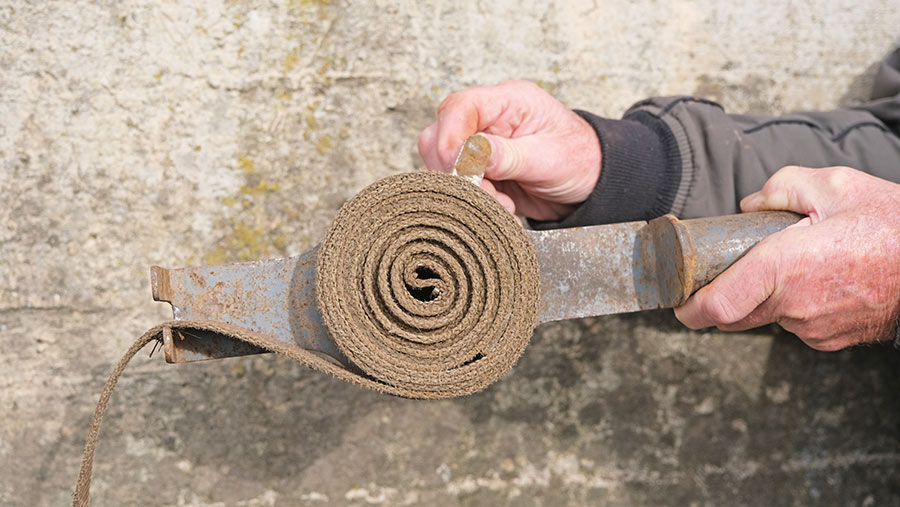
© James Andrews
Phil: I also designed a tool for winding ratchet straps. It takes ages for us to wrap a straw lorry’s worth by hand, so it helps speed the job up.
What couldn’t you live without in the workshop?
The best tool we’ve ever bought for the workshop is the 3/4in Milwaukee impact wrench.
It’s a fantastic time saver and there’s only been a couple of occasions where a nut has been too tight for it to shift.
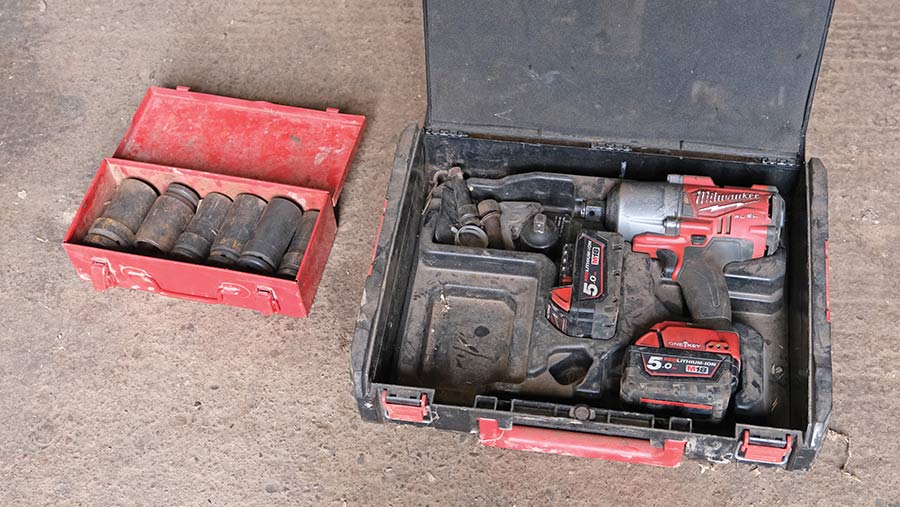
© James Andrews
James: The cordless angle grinder is also handy, as is the grease gun that Will bought himself because I couldn’t see the point of it.
It has been great though and gets used all the time, so I think I’d better pay him for it.
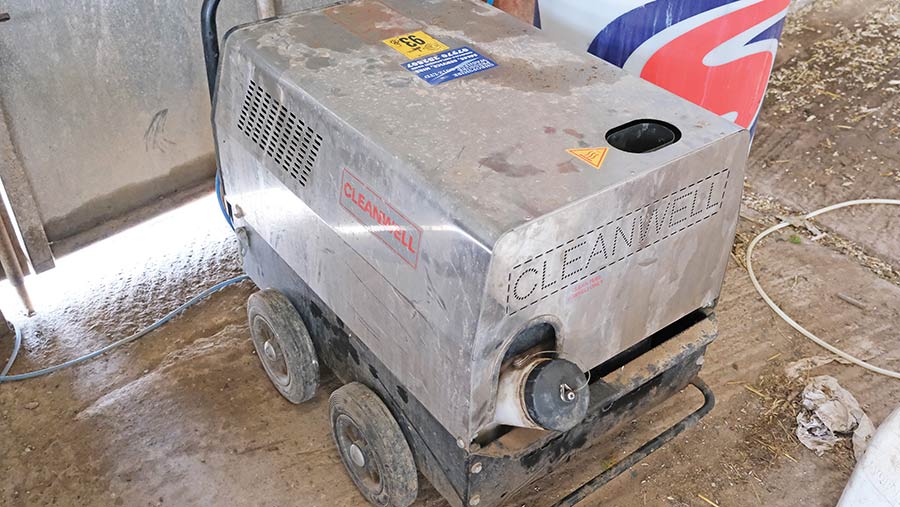
The Cleanwell steam cleaner © James Andrews
And we’ve been impressed with the Cleanwell steam cleaner that we got from Shropshire Pressure Washers.
It was a reasonable investment at £3,000, but it has plenty of power and the steam is very efficient at shifting grime.
What’s your everyday transport?
Most of the smaller straw deliveries are carried out with a 2008 VW Touareg. It’s well suited to the job as it can legally tow 3.5t, gives a smooth ride and the V6 diesel has plenty of power.
We’ve had it for about eight years and it’s now clocked 145,000 miles without too many mechanical problems.
However, we did recently have to shell out for new injectors at a cost of about £1,200. It’s also more than £500 a year to tax.
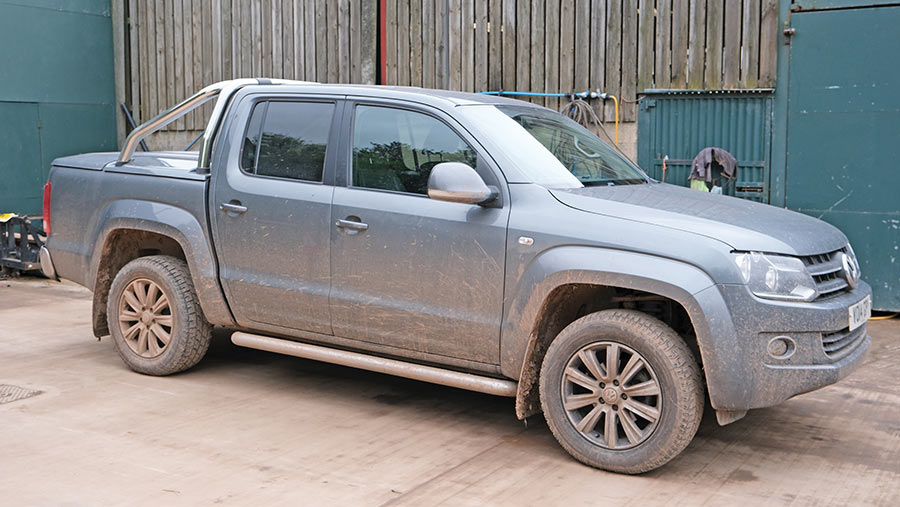
The 2014 VW Amarok © James Andrews
The other is a 2014 2-litre VW Amarok, which we bought recently to replace a 2013 model that had done a few more miles.
They’re brilliant trucks – comfortable, powerful for the size of engine, and the eight-speed automatic transmission is particularly smooth.
Our old single-cab L200 should also get a mention. We bought it six years ago for £1,100 and registered it for agricultural use so it runs on red diesel and doesn’t need an MOT.
It’s more pleasant to drive than a quad bike or Gator, far cheaper, can carry more and gets us anywhere on the farm without making too much mess.
Best tractor you’ve had?
In a few years’ time we might say the Fendt 724, but right now it’s the New Holland T6080.
We’ve had it for seven years and it’s been very reliable, but it’s also a handy size that means it can be used for almost any job.
In the spring, it gets hired out for pulling a destoner. We use it all summer for hauling bales with a Quicke QM6 loader and it hauls spud trailers in the autumn.
When we bought it, it had done 4,100 hours, most of which were clocked up when it was fitted with a sprayer.
We thought it was a bit flat so got Avon Tuning to give it a mild remap, which has pushed the power to 185hp and transformed the way it drives.
It has now done 9,500 hours without any significant problems, and we’ve got no plans to change it.
Worst tractor?
We haven’t had any particularly bad tractors as we’re careful about what we buy.
The most annoying one at the moment is the New Holland T7050, which has been giving us all sorts of grief with the electric spools.
It’s a well known problem but we haven’t got to the bottom of it yet.
Most surprisingly useful feature on a machine?
James: When we first got the Fendt, I just couldn’t get on with the technology and I was forever phoning up friends to ask how to set it up.
I was almost at the point of saying it had to go when suddenly it clicked. Now, I find most of the features on that tractor useful, particularly the autosteer GPS.
Most pointless piece of farm technology?
So much of the technology that comes out these days is expensive and most people can manage without it.
But it generally makes the job easier or more accurate and people soon get to the point of feeling like they can’t work without it.
That’s not a problem in itself, but if we rely on technology too much, we run the risk of losing the skills required to drive machinery manually.
Biggest machinery bargain?
The Case Magnum 310 deal worked out well, but the biggest bargain we’ve still got is an Ingersol Rand compressor for blowing off machinery.
It’s in decent condition, the engine runs well and it cost us only £500.

